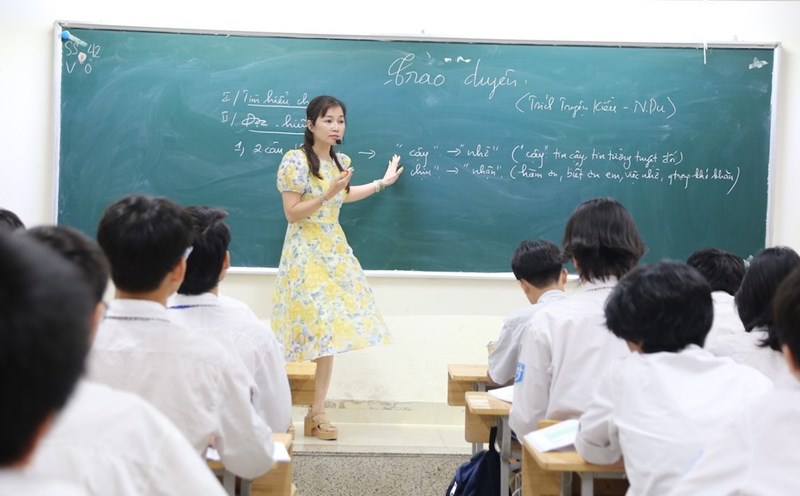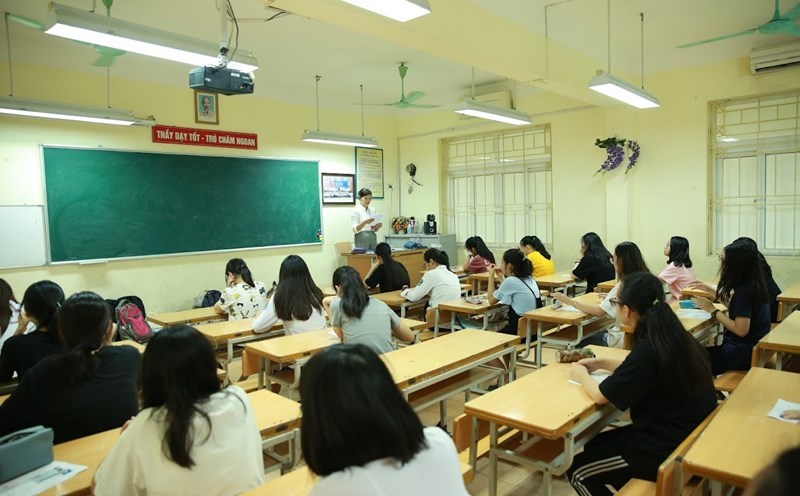In the context of administrative reform, the requirement to eliminate intermediate levels and streamline the apparatus, re-planning the vocational education institution system (VET) becomes an urgent task. However, if only mechanical mergers are used to reduce focal points, the risk of poverty training capacity, narrowing learners' opportunities and reducing their connection with the labor market is very high. The goal for the next 10 years must be quality and cohesion, not just quantity.
The planning is not only to reduce schools, but also to build an effective vocational training network, meeting the human resource needs of the digital economy. The three main destinations are to raise at least 20 international-standard occupations, provide highly skilled human resources for industrial parks, services and global chains, and at the same time establish a transparent governance mechanism, taking jobs and income of students as a measure.
Vocational education planning needs to be based on four basic principles.
First of all, it is the principle of quality, which means maintaining only facilities with capacity and meeting external inspection standards.
Next is the principle of layering and specialization, aiming to form excellent centers in key areas, along with a flexible satellite network to serve on-site needs.
Third is the principle of co-creating with businesses, ensuring that all training programs are directly linked to recruitment requirements and output standards.
Finally, there is the principle of transparency and accountability, that is, all decisions on merger or dissolution must be based on clear criteria, with specific impact assessments and transition roadmaps.
To have successful vocational education, Vietnam must put it in the national human resource plan with a clear student flow right from high school. Singapore is a typical example: About 25% of students enter ITE (Institute of Technical Education), 40% enter Polytechnic (Multi-disciplinary Technical College); and 30% enter Junior College (pre-university class) before moving on to postgraduate education. This structure creates a balance between vocational training and academia, while ensuring that each student flow is closely linked to practical human resource needs.
The system is designed to be streamlined but smart: ITE has three modern facilities, invested as post-high school education centers, capacity training with 70% of the practice time at enterprises; Thanks to consistent human resource planning, Singapore not only avoids the situation of "pushing in" to university but also maintains the quality and reputation of vocational education. Vietnam needs to learn this lesson by issuing a National Human Resources Plan to 2035, determining the percentage of students entering vocational education, colleges, universities and short-term training, so that the arrangement of training facilities is closely linked to student flow and labor market demand.
Many decisions on vocational education and training are administrative, lacking research and data. A typical example is the proposal to merge the vocational education and training centers and vocational education and training centers into vocational secondary schools (VCS) under the Department of Education and Training. This idea is not feasible because the conditions of facilities, staff and labor market in many localities are not enough to operate; the lifelong learning function of education and training is at risk of being eliminated. If implemented simultaneously, THN can easily become a complicated model, losing prestige with students and parents, and pushing students to follow high school or university. This is a testament to the habit of making policies without systematic analysis, which can easily lead to formal reform without improving the quality of reality.
From international experience and domestic practice, four main recommendations can be drawn out. One is to build a set of merger criteria based on quality, not imposing on the number of facilities. The second is to focus on investing in 20 - 30 national and regional excellent centers, while maintaining a satellite network to ensure access. Third, it is mandatory to conduct a policy impact assessment (RIA) before all major planning decisions. Fourth is to link the planning of the vocational education system with the flow of students according to a clear orientation in the National Human Resources Planning 2035, so that the training structure always meets labor needs.
10-year vision
In the coming decade, the Vietnamese education system needs to converge four characteristics: Streamlining the structure, keeping only capacity-based institutions; flexible training forms, from short-term modules to inter-colleges - post-high school education; closely linking with businesses, turning businesses into main study places; and transparency in quality, with an independent assessment system and publicizing rankings. At that time, the important question is not how many schools exist, but how many graduates have sustainable jobs and good income in the context of strong decentralization.
Re-planning the state education system must be a quality reform, led by data, co-created with businesses and associated with human resource planning. If we overcome the habit of under-respected policy making, Vietnam can build a modern vocational education system, becoming a driving force to improve productivity and national competitiveness in the next decade.











